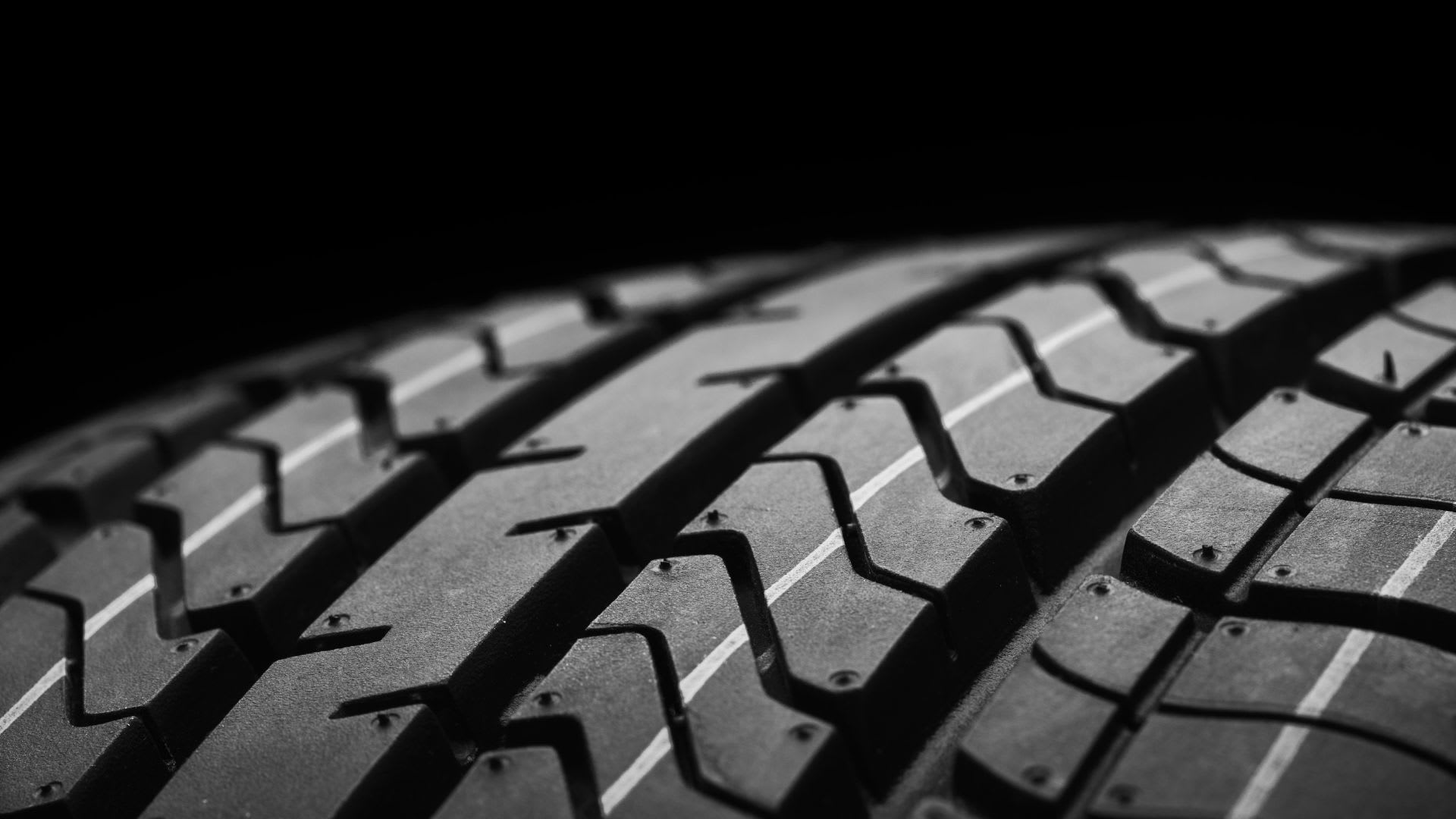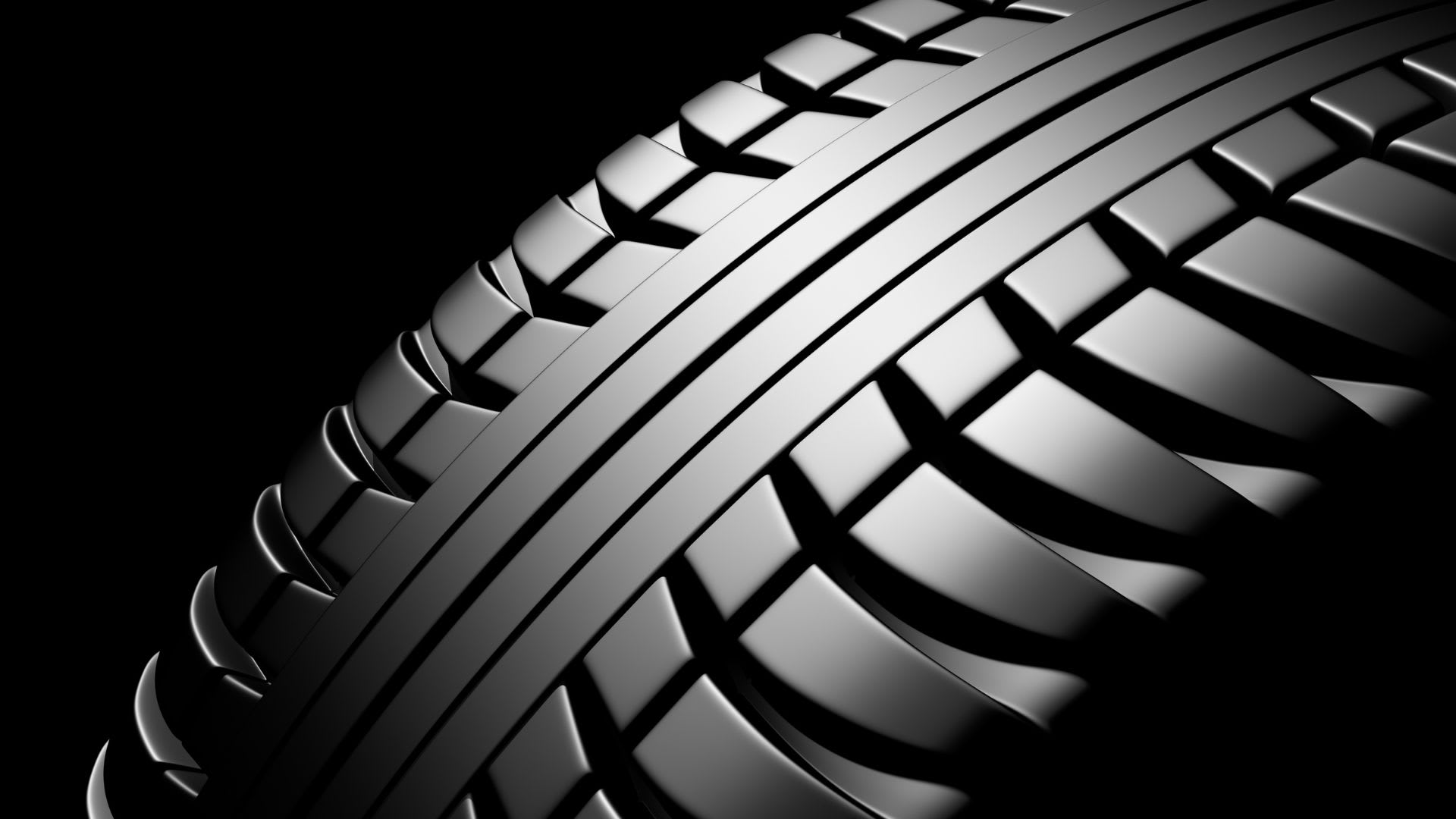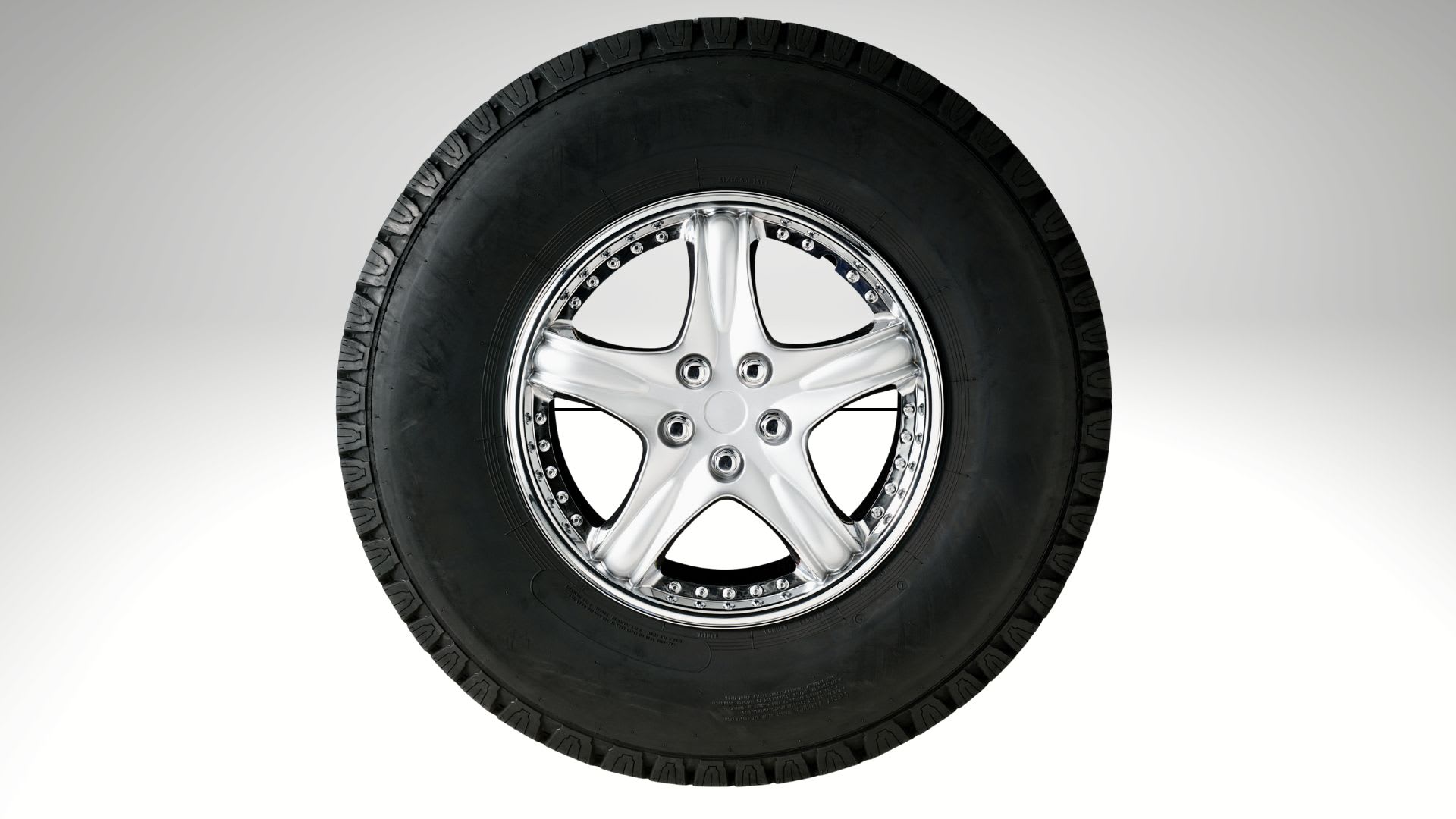Tire Maintenance & Safety
Free shipping
Best price guarantee
SimpleCrew exclusive savings
0% financing options
Tire replacement coverage
24/7 roadside assistance
Easy returns

Tire technology has evolved significantly since the early days of solid rubber tires, with each advancement addressing specific performance needs and driving conditions. Among these developments, bias-belted tires represent an important bridge between traditional bias-ply construction and modern radial technology.
Understanding tire construction helps drivers make informed decisions about replacement tires, especially when maintaining classic vehicles or operating heavy-duty equipment. The internal structure of a tire directly affects ride quality, fuel efficiency, load capacity, and overall vehicle performance.
Bias-belted tires continue to serve specific purposes in today's automotive landscape, particularly for vintage car enthusiasts and commercial applications. While radial tires dominate the modern market, bias-belted designs offer unique advantages that make them the preferred choice for certain vehicles and driving situations.
What Are Bias-Belted Tires?
Bias-belted tires represent a hybrid approach to tire construction that emerged as manufacturers sought to improve upon traditional bias ply designs. These tires combine the diagonal ply foundation of bias tires with additional reinforcement belts—creating a structure that delivers enhanced performance while maintaining the load-bearing characteristics that made bias ply tires popular for decades.
The construction begins with multiple layers of rubber-coated fabric plies, typically made from nylon, polyester, or rayon materials. These plies run diagonally across the tire from bead to bead at angles between 30 and 38 degrees, forming a crisscross pattern that provides the tire's basic structure. What sets bias-belted tires apart from standard bias ply designs is the addition of stabilizer belts—usually made of steel or other high-strength materials—positioned beneath the tread surface.
This dual-layer system creates several performance improvements:
- Enhanced tread stability: The steel belts reduce tread squirm and deformation during driving, which improves handling and extends tread life compared to basic bias ply tires
- Better heat dissipation: The reinforced construction helps manage heat buildup more effectively than traditional bias designs, though not as efficiently as radial tires
- Improved puncture resistance: Multiple ply layers combined with steel belts create a robust barrier against road hazards and debris
The evolution from bias ply to bias-belted construction addressed specific limitations of earlier tire designs. Traditional bias-ply tires suffered from excessive tread movement and heat generation, particularly at highway speeds. By adding stabilizer belts, tire engineers created a compromise solution that maintained the rugged durability of bias construction while reducing some of its inherent weaknesses. This made bias-belted tires particularly suitable for vehicles that required strong sidewalls and high load capacity but also needed improved highway performance.
How Bias-Belted Tire Construction Works
Bias-belted tire construction features a sophisticated layering technique that distinguishes it from other tire designs. The foundation of this construction is the careful arrangement of fabric plies, typically made of nylon or polyester. These plies are laid diagonally across the tire, connecting from one bead to the other. This configuration, along with additional belts placed beneath the tread, enhances the tire's overall performance. The belts, often composed of durable materials, provide reinforcement to the tread area. This layering results in a tire carcass that offers both stability and a comfortable ride experience.
The Layer System
At the heart of bias-belted tires is their multi-layered design. The fabric plies are strategically wrapped around the tire, ensuring comprehensive structural support. This diagonal placement allows for flexibility, which helps in absorbing road impacts efficiently. Reinforcement belts, positioned beneath the tread, play a crucial role in maintaining tread integrity and reducing movement. This method of construction ensures that the tire maintains balance and durability, crucial for reliable performance on various surfaces.
Key Components
Key elements of bias-belted tires work together to deliver distinct advantages. The tire bead is essential for securing the tire onto the rim, ensuring it stays in place during operation. The sidewalls, crafted using the diagonal ply technique, provide necessary cushioning and impact absorption. These layers distribute the vehicle's weight evenly across the tire, enhancing stability. Stabilizer belts beneath the tread enhance tread consistency and durability. These components contribute to a tire that effectively supports heavy loads while providing a dependable and smooth ride.
Advantages of Bias-Belted Tires
Bias-belted tires possess unique benefits that cater to specific driving needs and preferences. They deliver improved ride comfort by reducing vibrations and road noise, attributed to the diagonal ply arrangement reinforced with stabilizer belts. This design combination results in a balanced driving experience on various terrains while maintaining durability.
Another significant advantage lies in their operational cost-effectiveness. Though not as fuel-efficient as radial tires, bias-belted tires offer better rolling resistance than traditional bias-ply designs, which translates to moderate improvements in fuel consumption. This makes them a viable option for drivers seeking a balance between performance and operational costs.
The robust construction of bias-belted tires enhances their ability to handle substantial loads, making them ideal for vehicles that require high load capacity. The multiple layers provide an effective barrier against punctures, offering added protection from road debris. For classic car enthusiasts, these tires present an authentic option for maintaining vintage vehicle specifications while ensuring reliable performance. Their sturdy sidewalls contribute to stability, especially for vehicles frequently tasked with hauling heavy loads, ensuring consistent performance across various driving scenarios.
Disadvantages and Limitations
While bias-belted tires offer notable advantages for specific applications, they come with several limitations that potential buyers should consider. One prominent drawback is their higher rolling resistance compared to radial tires. This increased friction with the road surface can lead to decreased fuel efficiency, making them less economical over long distances. Bias-belted tires are also known for their tendency to retain more heat during extended driving, which can impact tire durability over time.
Handling and ride comfort present challenges with bias-belted tires. The construction of these tires, while robust, results in a stiffer ride that may not be as comfortable for everyday passenger vehicle use. Unlike radial tires, bias-belted designs have a more rigid sidewall, which can result in less responsive handling. This rigidity can affect the driver's ability to maneuver the vehicle quickly and confidently in dynamic driving conditions.
Availability is another concern for those interested in bias-belted tires. As the industry has largely transitioned to radial tire production, finding bias-belted models can be challenging, particularly in specific sizes. This scarcity can pose challenges for consumers seeking these tires for specialized needs, such as classic car restoration or heavy-duty applications. Additionally, their limited suitability for high-speed and performance driving underscores their niche appeal, making them less versatile than other tire options on the market.
Bias-Belted vs Radial Tires: Key Differences

Understanding the core distinctions between bias-belted and radial tires is essential for making informed tire choices. These differences in construction and performance characteristics influence various aspects of vehicle dynamics, from fuel efficiency to load handling. Central to these differences is the unique build of each tire type.
Construction and Design
Radial tires introduced a transformative approach to tire design, featuring plies that extend radially from one bead to the other, perpendicular to the direction of travel. This configuration allows the sidewalls to flex independently from the tread, providing enhanced comfort and stability. Reinforced with steel belts beneath the tread, radial tires achieve a balance of strength and flexibility.
Bias-belted tires, on the other hand, incorporate a combination of diagonal plies overlaid with belts. These belts, often made from materials like fiberglass or steel, add an extra layer of reinforcement to the tread area. This design results in a tire that maintains its shape under load, offering durability and resistance to external impacts, albeit with reduced sidewall flexibility compared to radials.
Performance Characteristics
The performance distinctions between these tire types are evident in several areas. Radial tires excel in reducing rolling resistance, which enhances fuel efficiency and contributes to a longer tread life. Their ability to maintain consistent traction and stability, especially during high-speed maneuvers, makes them suitable for a wide range of driving conditions.
Bias-belted tires stand out in scenarios requiring substantial load support and resilience against rough terrains. Their robust construction handles heavy loads effectively, making them suitable for specific applications where durability is paramount. While they may not offer the refined handling of radials, their ability to withstand challenging conditions is a key advantage.
Suitability and Applications
The choice between bias-belted and radial tires depends largely on the vehicle's purpose and driving conditions. Radial tires, with their superior adaptability and efficiency, are the preferred option for most modern passenger vehicles. They offer versatile performance that meets the demands of everyday driving, balancing comfort and fuel economy.
Bias-belted tires, however, find their niche in specialized roles, such as in classic cars or vehicles tasked with heavy-duty operations. Their construction provides the necessary toughness for these applications, delivering reliable performance where structural integrity and load-bearing capacity are critical. While not as common as radials, bias-belted tires fulfill specific needs that radials may not fully address.
Best Applications for Bias-Belted Tires
Bias-belted tires offer unique advantages in certain applications, making them a valuable choice for specific vehicle needs. Their construction suits particular driving conditions, where their strengths come into play, enhancing performance and reliability.
Classic and Vintage Vehicles
For classic and vintage vehicle owners, bias-belted tires are particularly beneficial due to their distinctive construction that aligns with traditional automotive designs. These tires can match the aesthetic and functional aspects of older cars, allowing enthusiasts to maintain the historical integrity of their cherished vehicles. Available in period-correct sizes, they complement the authentic restoration efforts of collectors, ensuring that both appearance and performance remain true to the vehicle's original design.
The driving experience of vintage cars often relies on maintaining specific characteristics, and bias-belted tires help preserve this authentic feel. Their particular build contributes to the unique handling dynamics expected from classic vehicles, offering drivers a connection to the past with every journey. This makes them an ideal choice for those who value historical accuracy and traditional driving experiences.
Commercial and Heavy-Duty Use
In commercial and heavy-duty settings, bias-belted tires provide crucial benefits where durability and strength are paramount. These tires excel in supporting vehicles involved in demanding tasks, such as towing and transporting heavy loads. Their ability to handle substantial weight makes them suitable for industries relying on reliable and robust tire solutions.
When operating in environments where terrain can be unpredictable or harsh, bias-belted tires offer the necessary resilience. Their construction provides enhanced protection against potential punctures from debris, making them a practical choice for off-road applications. This reliability is essential for vehicles frequently encountering rugged conditions, where tire integrity must remain uncompromised to ensure safe and efficient operations.
Bias-Belted Tire Maintenance Tips

To ensure the best performance and longevity of bias-belted tires, regular maintenance is crucial. Begin by consistently monitoring tire pressure, as keeping tires properly inflated helps avoid issues like excessive rolling resistance and the buildup of heat that can shorten tire life. Using a dependable gauge monthly can help maintain these inflation levels, reducing the risk of premature wear and potential tire damage.
Routine tire rotation, approximately every 5,000-6,000 miles, is essential for distributing wear evenly across all tires. This practice not only extends the tire's lifespan but also ensures balanced vehicle handling. Unlike certain radial tires, bias-belted tires allow for versatile rotation patterns—including front-to-back, side-to-side, and diagonal—facilitating even wear regardless of vehicle setup. This approach helps prevent wear-related alignment issues, contributing to a more stable and reliable driving experience.
Conducting thorough visual inspections is another key component of tire maintenance. Check for any irregular wear, which may signal alignment or suspension concerns. Examine the sidewalls closely for any damage, such as bulges or separations, that could compromise the tire's structural integrity. Regularly assessing tread depth using the penny test provides a simple yet effective way to gauge remaining tread life. Insert a penny into the tread grooves, and if you can see the top of the figure's head, it indicates the need for tire replacement. These preventive measures are vital for maintaining the safety and effectiveness of bias-belted tires, ensuring they continue to perform optimally over their intended service life.
Making the Right Choice: When to Consider Bias-Belted Tires
Understanding the distinct needs of your vehicle and driving circumstances is key when choosing tires. Bias-belted tires shine in situations requiring a blend of durability and historical fidelity. For those restoring vintage cars, these tires replicate the original characteristics of the era, ensuring that both the look and performance remain true to the vehicle's heritage. They provide a balance of aesthetic precision and functional reliability, valuable for collectors aiming to maintain the authentic feel of classic automobiles.
In demanding environments, such as commercial or off-road settings, the robust construction of bias-belted tires is advantageous. Their ability to withstand significant weight and challenging road conditions makes them a practical choice for vehicles tasked with frequent hauling. This durability offers a reliable solution for those prioritizing strength and resilience in their tire selection. When weighing the initial affordability of bias-belted tires against potential fuel efficiency costs, it is important to consider the specific operational demands of your vehicle.
Consulting your vehicle's owner manual provides guidance on the recommended tire specifications, ensuring that you align your choice with the manufacturer's standards. Engaging with professionals knowledgeable about classic and specialty tires can further inform your decision, offering insights into the best options for your needs. While bias-belted tires excel in specific roles, it’s essential to recognize that modern radial tires generally deliver superior performance for everyday driving conditions, offering improved fuel efficiency and handling.
Whether you're maintaining a classic car or need heavy-duty tires for commercial use, understanding bias-belted tire construction helps you make the right choice for your specific needs. While these tires serve important niche applications, most modern vehicles benefit from the advanced technology and efficiency of radial tires. Ready to find the perfect tires for your vehicle? Shop for tires online and find the best deals with our extensive selection and expert guidance to help you drive with confidence.
Ready to find the perfect tires?
Search By